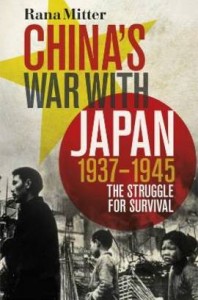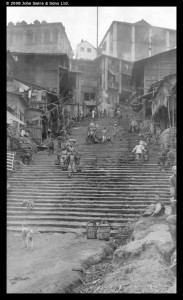BICC research network leader Rana Mitter’s new book  China’s war with Japan, 1937-1945: The Struggle for Survival is published this week by Allen Lane. It is the first comprehensive history of the politics, experience, and aftermath of the Sino-Japanese War that became part of World War II, seen from the Chinese side and drawn from a wide range of Chinese materials. It argues for a revisionist view of the Nationalist contribution to the Allied war effort, and that a new model of authoritarian social welfarism emerged from the conflict. Mitter’s book will be published under the title Forgotten Ally in North America in September.
China’s war with Japan, 1937-1945: The Struggle for Survival is published this week by Allen Lane. It is the first comprehensive history of the politics, experience, and aftermath of the Sino-Japanese War that became part of World War II, seen from the Chinese side and drawn from a wide range of Chinese materials. It argues for a revisionist view of the Nationalist contribution to the Allied war effort, and that a new model of authoritarian social welfarism emerged from the conflict. Mitter’s book will be published under the title Forgotten Ally in North America in September.
Here, Rana Mitter talks to Rob Gifford, China editor of The Economist, about the book: http://www.economist.com/blogs/prospero/2013/06/legacy-sino-japanese-war
Reviews and comments have already been published in The Economist; The Guardian; The Spectator; Prospect; Financial Times:
“Restor[es] a vital part of the wartime narrative to its rightful place. . . . A remarkable story, told with humanity and intelligence; all historians of the second world war will be in Mitter’s debt. . . . No one could ask for a better guide.” – Richard Overy, Guardian
“The best narrative of that long-ago war, whose effects still linger in China today.” – Jonathan Mirsky, The Spectator (London)
“Illuminating and meticulously researched. . . . It is the voice of the Chinese [. . .] that gives the distinctive tone to Mitter’s narrative. From the diaries of Chiang Kai-shek to those of national journalists and middle-class Chinese fleeing the conflict, these first-person observations are woven skilfully into his chronicle of the battles and struggles.” –The Economist



